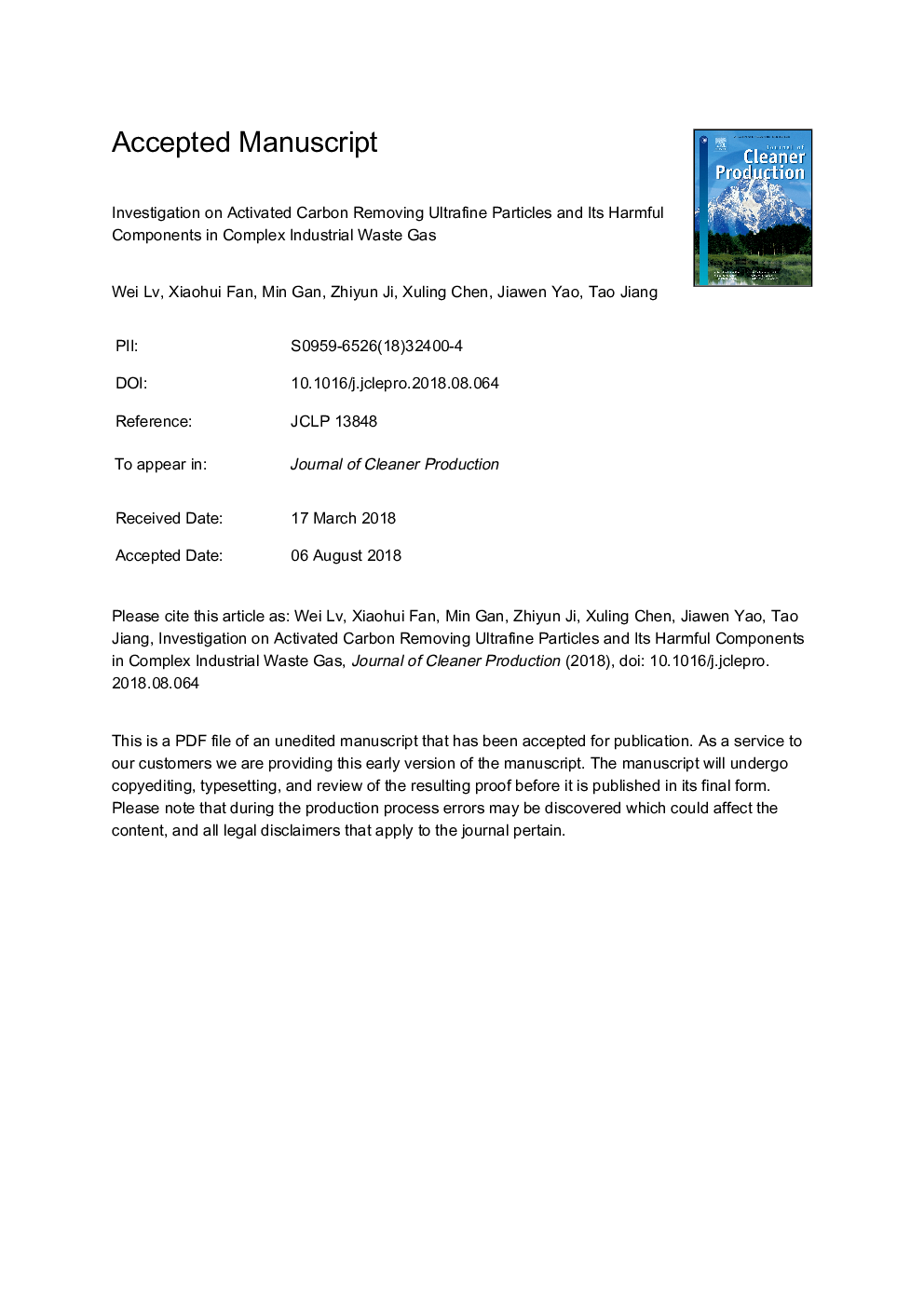| Article ID | Journal | Published Year | Pages | File Type |
|---|---|---|---|---|
| 8092739 | Journal of Cleaner Production | 2018 | 45 Pages |
Abstract
Sintering waste gas contains complex fine particles comprised of iron oxides, CaFe compounds, sulfate, alkali chlorides and other components. In this paper, a laboratory simulative experiment was conducted to investigate the removal effects of activated carbon (AC) on different fractions of PM10 and its harmful components, the possible mechanism was discussed as well. The results showed that the removal rates on elements Pb, K, Na, S and Cl were all above 50%, which were more prominent than that of Fe and Ca. And the removal efficiency of particles improved with the aerodynamic diameter increased. PM2.5 were mainly spherical particles formed by Fe, Si, Ca and Al, which were removed by AC because of diffusion and interception effect. PM2.5-10 were mainly consisted of Pb, K, Na, S and Cl, which were irregular particles like needle, columnar and cubic. These particles were removed by inertial collision effect. Therefore, the removal effect was especially significant when came to particles larger than 2.5â¯Î¼m.
Keywords
Related Topics
Physical Sciences and Engineering
Energy
Renewable Energy, Sustainability and the Environment
Authors
Wei Lv, Xiaohui Fan, Min Gan, Zhiyun Ji, Xuling Chen, Jiawen Yao, Tao Jiang,
